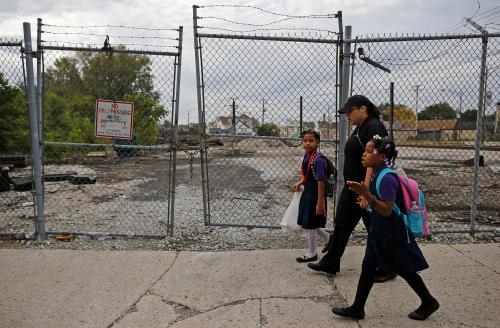While many commentators have expressed concerns about the large deficits of public pension plans, few have rung the alarm about the large deficits of retiree healthcare plans (RHPs) of local governments. In fact, the funding gaps for RHPs are usually at least 20% higher than those for public pensions. For example, the Mass Taxpayers Foundation has recently reported that Massachusetts local governments – cities and towns ( not the State ) – are saddled with $15 billion in pension deficits as compared to $30 billion in RHP deficits.
RHP deficits are larger than pension deficits of local governments for two main reasons. First, until 2004, no local government was required to include RHP deficits on their balance sheets. Even now, local governments are generally allowed to calculate these deficits on the basis of whatever they believe is the expected return on assets – as opposed to the actual return. Second, local governments have never been required to pre-fund RHP liabilities, in contrast to the pre-funding requirements for most pension plans that have been in place for two or three decades. In Massachusetts for instance, the funded ratio of assets to liabilities is 57% for local government pensions, but less than 1% for their RHPs.
On the other hand, RHPs may be amended in most states without running up against the constitutional protections for pension plans in many states. Thus, we should have a serious political debate about what should be the ground rules for RHPs offered to current and new public employees – but not for those already retired whose benefits should remain the same for fairness and political reasons.
The legitimate objective of RHPs is to help ensure that long-term public employees receive healthcare if they retire a few years before they become eligible for Medicare at age 65. However, most local government employees can retire at age 55 after a relatively short stint of public work. For instance, most municipal employees in Massachusetts are eligible for healthcare benefits after only 10 years of public service. Indeed, some public employees in Boston are eligible for healthcare benefits after 10 years of part-time work for the city.
So what can be done to constrain the financial threat of RHPs to local governments? First, local governments should require at least 20 years of full-time public service before retired public employees become eligible for RHPs. Second, healthcare benefits for retired public employees should not start until after they reach age 55 and they do not have another source of healthcare benefits (such as a private sector employer after they leave public service ).
This last condition raises a third question – why should local governments continue to offer RHPs to anyone eligible for Medicare? Although many public jurisdictions move their retirees entirely to Medicare at age 65, some continue to pay 50% to 80% of Medicare Part B premiums for their retired employees; and nearly all pay at least 50% for supplemental medical plans like Medigap. This seems unnecessary since Congress has kept Medicare premiums fairly low for most recipients, and raised such premiums only for those in higher income brackets who can afford to pay more.
Fourth, local governments should take advantage of Obamacare to offer relatively inexpensive and quality policies to their retirees between the ages of 55 and 65. Such policies at three different levels (Bronze, Silver and Gold) must be offered by every state through exchanges (run by the state or the federal government). Moreover, for policies bought through such exchanges, public retirees would be eligible for federal premium subsidies, which extend to families of four until their incomes exceed $90,000 per year.
Finally, local governments should use realistic assumptions in calculating the RHP liabilities they now report to taxpayers. Between 2009 and 2011, for example, Boston lowered its RHP liabilities by $1billion simply by increasing its “assumed” returns on most of its long-term investments from 5.25% to 7.25%. By these unsubstantiated enhancements in actuarial assumptions, cities like Boson are effectively distorting honest debate that all cities and towns should be having about the funding of these RHPs.
In short, while not ignoring the deficits of public pensions, we should also focus on the deficits of RHPs in most local governments. Although the deficits in RHPs are substantially larger than those in public pensions, RHPs are easier to revise from a legal perspective. Nevertheless, any benefit revision for public employees will be politically controversial. So local governments should accurately calculate the unfunded liabilities of their RHPs, and seriously consider several reforms — most importantly, tightening eligibility requirements and integrating RHPs more closely with Medicare and Obamacare.



Commentary
Op-edGovernments Face a Bigger Challenge Than Public Pensions
October 29, 2013